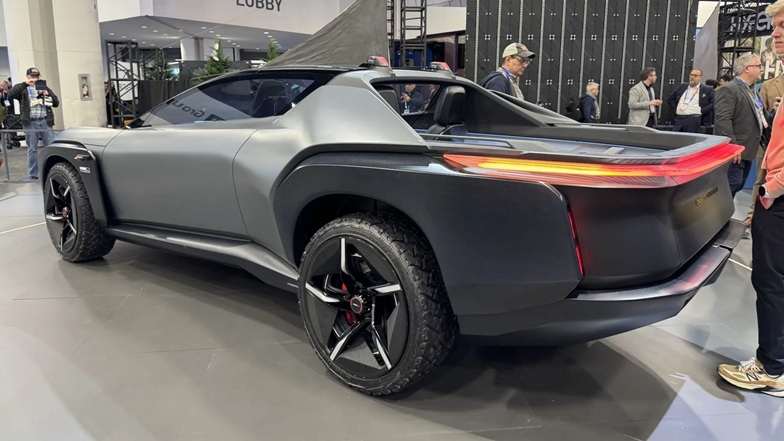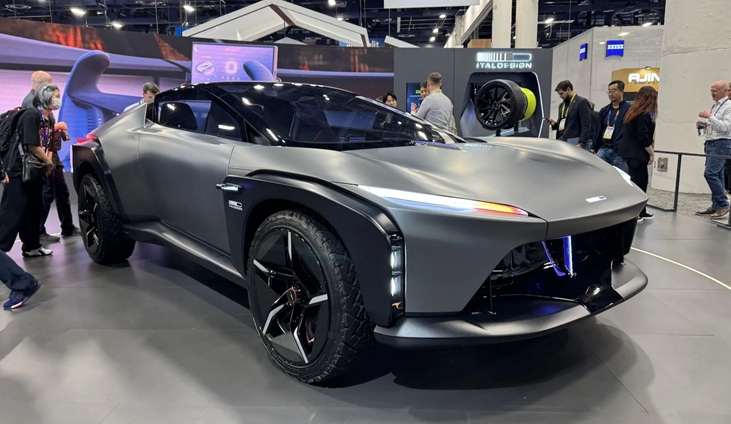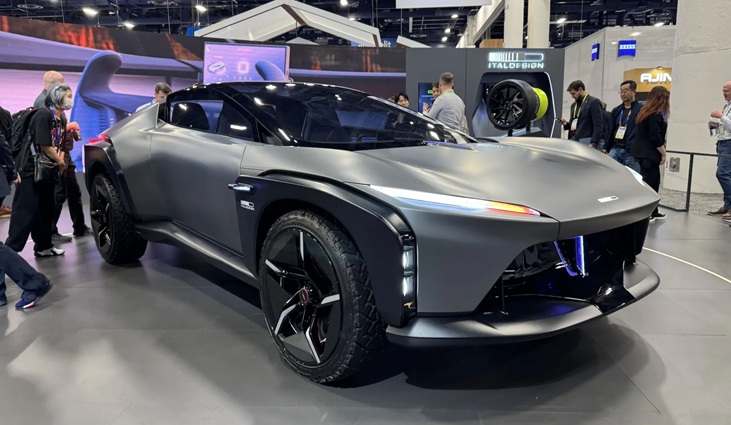In-wheel electric motors have long been hailed as a breakthrough technology for electric vehicles (EVs), offering innovative packaging and performance possibilities. However, their adoption has faced challenges, such as the complexity of integrating motors and brakes within the same space and concerns over added unsprung weight. At CES 2025, Slovenian company Elaphe took a bold step forward, unveiling the Sonic 1—a slim, high-performance in-wheel motor designed to overcome these hurdles. Here’s why this development could reshape the future of EVs.

Compact Power Meets Performance
The Sonic 1 is Elaphe’s latest innovation, designed to address one of the biggest limitations of in-wheel motors: space constraints. Traditionally, in-wheel motors occupy the same area as brake hardware, making it difficult to accommodate large, high-performance brakes. However, the Sonic 1 breaks this mold by introducing a thinner motor design that can coexist with larger brake rotors.
Elaphe claims the Sonic 1 can house 400-millimeter brake rotors alongside its motor hardware within a 21-inch front wheel. This compatibility makes the motor ideal for EVs and hybrids that demand high braking performance.
The motor delivers an impressive 268 horsepower and 737 lb-ft of torque, but it can also be tuned for even higher outputs depending on the application. While each motor adds 88 pounds of unsprung weight, which could make ride and handling tuning more challenging, Elaphe believes the performance benefits far outweigh the tradeoffs.
Showcasing the Technology: Italdesign Quintessenza GT
To demonstrate the capabilities of its in-wheel motors, Elaphe showcased the Sonic 1 in the Italdesign Quintessenza GT concept car at CES 2025. This futuristic grand tourer features a raised ride height, a pickup-style bed, and performance figures that rival top-tier sports cars.
The Quintessenza GT boasts:
- 0-62 mph in just 2.5 seconds, or 2.2 seconds with performance tires.
- A 150-kWh battery pack, providing an estimated 466 miles of range (though the specific test cycle for this estimate remains unclear).
The concept car highlights the Sonic 1’s potential to power high-performance EVs while offering significant packaging advantages.
Partnerships and Challenges in Adoption
Elaphe’s in-wheel motors have been considered for various high-profile projects, including the Lordstown Endurance pickup truck and the hyper-efficient Lightyear 0 sedan, but neither reached mass production. Despite these setbacks, Elaphe has continued to push forward, forming strategic partnerships to refine its technology and expand its applications.
In 2023, Elaphe announced a collaboration with McLaren Applied Technologies, the tech division of the legendary race team and supercar builder. This partnership aims to integrate Elaphe’s in-wheel motor tech into “highly efficient and hyper-responsive electric vehicles”, showcasing its versatility for both performance and efficiency-focused designs.

The Advantages of In-Wheel Motors
In-wheel motors offer several distinct advantages for EV design:
- Enhanced Packaging Flexibility: By moving propulsion hardware to the corners of the vehicle, in-wheel motors free up valuable space in the chassis for other components, such as larger batteries or more spacious interiors.
- Direct Power Delivery: Since the motors are located directly within the wheels, they provide instantaneous torque and improved responsiveness.
- Improved Weight Distribution: Properly integrated, in-wheel motors can contribute to better overall weight balance, enhancing handling dynamics.
However, there are tradeoffs to consider. The added unsprung weight can impact ride quality and handling, especially in vehicles that prioritize comfort over performance. Manufacturers like Elaphe are working to minimize this drawback by making their motors as lightweight and compact as possible.
Growing Interest in In-Wheel Motor Technology
Elaphe isn’t the only company making strides in this space. At CES 2025, Donut Lab unveiled its own family of in-wheel motors, boasting record power density and a range of sizes suitable for applications ranging from passenger cars to drones.
Meanwhile, established automakers are also exploring the potential of in-wheel motors. For example:
- Ferrari has reportedly filed patents for an in-wheel motor design tailored for high-performance EVs.
- Ford has been spotted testing pickup trucks equipped with what appear to be in-wheel motors, hinting at the technology’s potential in heavy-duty applications.
These developments suggest that in-wheel motors are no longer a niche concept but a growing trend in the EV industry.

Paving the Way for Future EVs
Elaphe’s innovations, particularly the Sonic 1, represent a significant step forward for in-wheel motor technology. By addressing key challenges like space constraints and weight, the company is unlocking new possibilities for EV design and performance.
While the technology is still evolving, its potential applications are vast—from high-performance sports cars to efficient urban commuters and even off-road vehicles. With companies like Elaphe leading the charge, the day when in-wheel motors become a standard feature in EVs may not be far off.
The Sonic 1 in-wheel motor showcases Elaphe’s commitment to pushing the boundaries of electric vehicle technology. With its compact design, impressive power output, and compatibility with high-performance brakes, the Sonic 1 could be a game-changer for automakers seeking to combine efficiency, performance, and innovative design.
As the automotive industry shifts towards electrification, advancements like these are critical for meeting the growing demand for zero-emission vehicles without compromising on performance or practicality. Whether it’s through partnerships with companies like McLaren or showcasing their technology in cutting-edge concepts like the Italdesign Quintessenza GT, Elaphe is positioning itself as a leader in the future of electric mobility.
The next few years will be crucial as in-wheel motors move from niche prototypes to mainstream adoption. With their unique advantages and growing interest from major automakers, they could soon become a defining feature of the next generation of EVs. Stay tuned—this is one innovation you won’t want to miss!
Related Post
